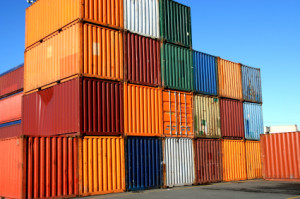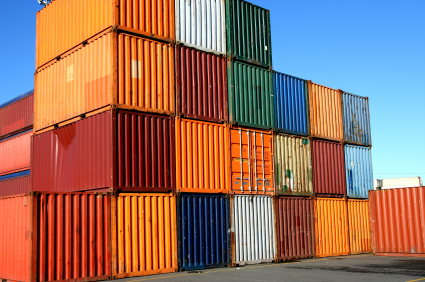 SUBIC Bay Metropolitan Authority (SBMA) is proposing a 15% increase in tariff rates for foreign container cargo, as well as the imposition of new rates for domestic container cargoes at Subic port, three hours north of the Philippine capital Manila.
SUBIC Bay Metropolitan Authority (SBMA) is proposing a 15% increase in tariff rates for foreign container cargo, as well as the imposition of new rates for domestic container cargoes at Subic port, three hours north of the Philippine capital Manila.
The tariff rate restructuring will also cover fees for foreign and domestic palletized and non-palletized cargoes, as well as arrastre and stevedoring services.
In a recent public hearing, SBMA seaport department general manager Jerome Marvin Martinez said the increase was proposed because the cost of fuel, labor, materials (machinery) and utilities had spiked since the last hike in 2004.
The 15% increase in tariff for foreign cargo will be implemented in two tranches — 8% in the first tranche and 7% in the second tranche.
The proposed increase will reportedly help fund automation of Subic port processes, linking SBMA, New Container Terminals 1 and 2 operator Subic Bay International Terminal Corp (SBITC) and Bureau of Customs Subic.
For improved coordination, there are plans by SBITC to build a one-stop shop at New Container Terminal 1 to house some units of the SBMA and the Bureau of Customs. SBMA and BOC Subic are 7 to 9 kilometers away from the port.
The proposed stevedoring charge for an empty 20-footer on a non-sustaining vessel is US$40.97 (versus existing $35.63) and $48.72 (from $42.37) when loaded. For a 40-footer, $52.81 will be charged for an empty and $68.22 for loaded.
For self-sustaining vessels, the stevedoring fee for an empty 20-footer is $19.40 and $27.10 for loaded. For a 40-footer, the charge is $31.19 (empty) and $46.65 (loaded).
Arrastre fees for loaded import cargoes will cost $41.40 for a 20-footer and $94.99 for a 40-footer while for exports, a 20-footer will be charged $33.81 and $77.62 for a 40-footer.
Meanwhile, the proposed domestic containerized rate for a full container load and less than container load is as follows:
- For a loaded 10-footer, the fee is P451.50 and for empty 135.50; the stevedoring fee for both empty and loaded is the same at P164.
- For a 20-footer, the arrastre fees are P903.50 (loaded) and P361.50 (empty); the stevedoring rate is P273.50 for both loaded and empty.
- For a 40-footer, the arrastre fee for loaded is P1,806 and for empty, P723; the stevedoring fee is P273.50 for each of both.
A cranage fee of P812 per move will also be charged.
Other proposals:
- Arrastre fee for non-palletized general foreign cargo of P164, up 161% from the current P62.85 but P82 lower than the Manila rate of P246.10.
- Stevedoring fee of P134 for non-palletized general foreign cargo, 216.2% higher than the P42.38 current rate but lower by P57.53 than the Manila rate of P191.53.
- Arrastre fee for palletized general foreign cargo of P90, up from the existing P62.85 and P19 lower than Manila’s charge.
- Stevedoring fee for palletized general foreign cargo of P67 from P42.38, is P6.70 lower than Manila’s P74.90.
For a copy of the proposed tariff adjustments, click here.
On August 2, SBMA held a meeting with officials of SBITC, shipper Juken Sangyo (Phils.) Corp and its cargo handler Fuso Logistics Inc, and APL, one of the international shipping lines serving the port, to tackle the proposed increases.
APL Subic had reportedly relayed its opposition in a letter to the SBMA, saying the proposed rate increase would have a major effect on the liner’s already very thin margins.
SBITC for its part claims it has been losing money since it started operations at the New Container Terminal 1 in 2008 due to escalating operating costs. It said 80% of its revenues also go to SBMA, and failure to pay would mean automatic cancellation of its 25-year contract as port operator.
Juken Sangyo’s opposition
In a position paper submitted to SBMA, lumber importer Juken Sangyo (Phils) Inc opposed the increases, saying they would impact heavily on costs.
Juken, the largest importer of lumber and considerably the biggest exporter of containerized cargo in Subic, said the proposed cargo-handling increase for non-containerized cargo could jack up costs by P3.06 million a year, something that will be hard to pass on to customers in an extremely competitive industry.
This rate increase for lumber cargo would be “too high” considering the export volume has more or less remained the same, the company said.
The proposed 15% increase in port tariff would in addition bring up costs by US$10,858.76 each year, it added.
The company noted a comparison between Subic and Manila tariffs “may give us a general impression that Subic rates are much lower than Manila ports” but which may not reflect the real picture.
“As the cargo volume is much lower than Manila, our Subic port is considered to be a minor port with a supposedly proportional lower cost to offer. But this is not true for a 15% increase.
“Compared to Manila (MICT), our Subic port is less 99% in volume…. And while the arrastre rate is… at a less value of 50% even for the newly proposed rates, the evaluation should also look at proportional level in order to accurately gauge the economy of using Subic port.”
In other words, taking into consideration the economies of scale between the much bigger Manila and smaller Subic, “we can only consider Subic port as 50% lower in economy if (we assume) the volume is the same (as MICT’s), especially talking about arrastre or any other port charges. As such, the difference of percentage from cargo volume to arrastre rate is a staggering 49% which (could be taken to mean) that Subic port is in effect more expensive than other ports.”
The company said the “worst case that could happen is that our Subic port cannot compete in terms of business volume that we are forced to increase our unit costs to the same level as other ports; that in the end, Subic port will have nothing to offer at all.”
A more “positive approach” to increasing revenues is by actively promoting Subic port, noting that marketing is key to attracting cargo, the company said.
The position paper was prepared by Juken Sangyo logistics manager Ramel Abellanes.






Hi. Good day. I recently have a client wherein I would be importing oil from Malaysia. I would like to seek your kind assistance in providing me the seaport rates as per tariff rates. This information is vital so that I can formulate an accurate quotation for my client.
In this regard, I hope to hear from you soon. Thank you and more power to your site.
Please go to http://www.ppa.com.ph for seaport rates. The rates on vessel and cargoes are under the main menu with heading of “Port Tariff”.
Comments are closed.